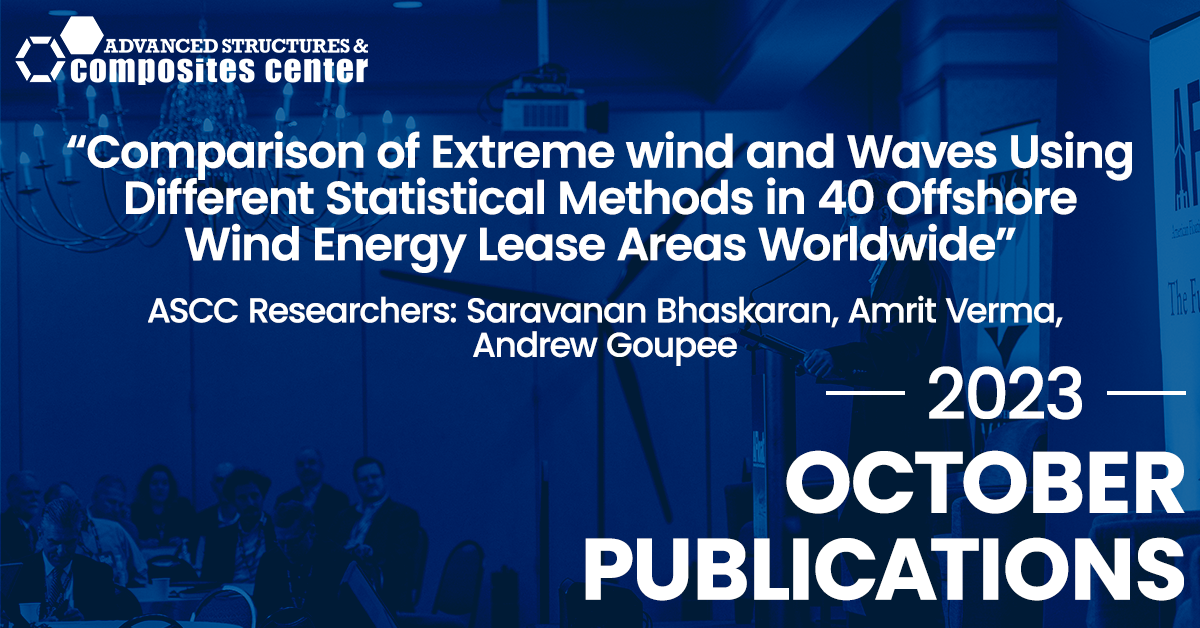
ASCC & international research aims to calculate risk conditions for floating offshore wind
An article by Advanced Structures & Composites Center (ASCC) researchers Saravanan Bhaskaran, Amrit Shankar Verma, and Andrew J. Goupee, along with University of Surrey researcher, Subhamoy Bhattacharya, Norwegian University of Science and Technology researcher, Amir R. Nejad, and Dalian University of Technology Deepwater Engineering Research Center researcher, Wei Shi was published in Energies Journal. The publication titled, “Comparison of Extreme Wind and Waves Using Different Statistical Methods in 40 Offshore Wind Energy Lease Areas Worldwide”, aims to approximately calculate extreme wind and wave conditions spanning multiple newly designated offshore wind lease sites on six continents.
These calculations are critical for risk assessment and the development of offshore wind turbines. This study unearthed valuable information for the development of offshore wind farms, which hold the potential to power not just the state of Maine, but the United States.
“Within 50 miles of the U.S. coasts, there is enough offshore wind capacity, theoretically, to power the country four times over.” – Dr. Habib Dagher, ASCC Executive Director
Comparison of Extreme Wind and Waves Using Different Statistical Methods in 40 Offshore Wind Energy Lease Areas Worldwide
Saravanan Bhaskaran, Amrit Shankar Verma, Andrew J. Goupee, Subhamoy Bhattacharya, Amir R. Nejad and Wei Shi
Energies Journal (2023)
https://www.mdpi.com/1996-1073/16/19/6935
